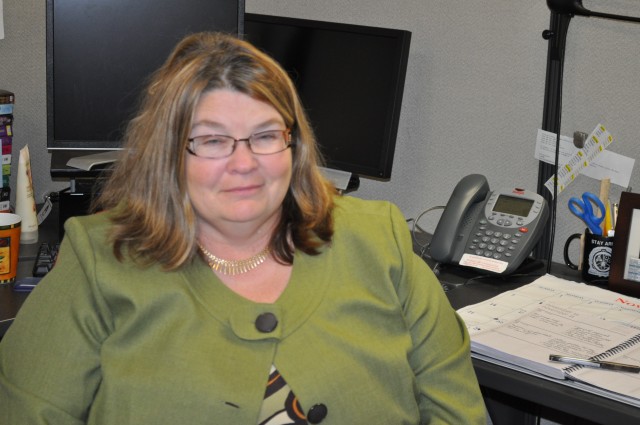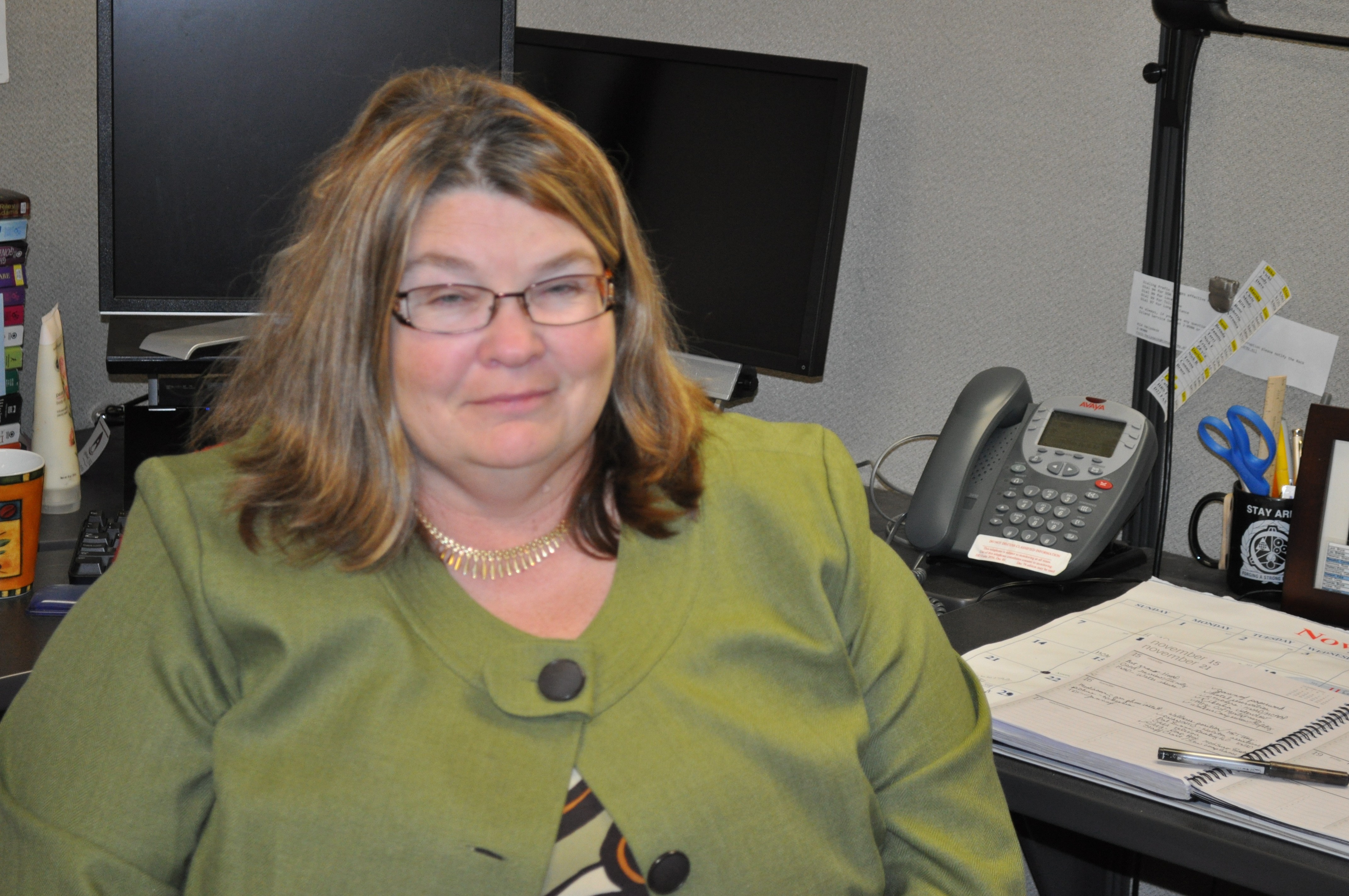ROCK ISLAND ARSENAL, Ill. -- Employed here since 2007, she's relatively new to the Joint Munitions Command and yet you wouldn't know it.
She began her career as a Soldier, became a chemist and eventually an industrial hygienist.
Cathy Sonnenberg's career is peppered with accomplishment and now, she adds another.
Sonnenberg will be the next member of the Joint Army Navy NASA Air Force Safety and Environmental Protection subcommittee.
The JANNAF Interagency Propulsion Committee is composed of representatives from the Department of Defense and NASA, and consists of an Executive Committee, technical subcommittees, and ad hoc committees. JANNAF exists to promote and facilitate exchange of technical information; establish standards; effect coordination of research, exploratory development, and advanced development programs in the areas of missile, gun, and space propulsion; and accomplish problem solving in areas of joint agency interest.
The JANNAF scope includes propulsion systems based upon chemical or electrical energy release, intended for use in missiles, rockets, boosters, spacecraft, satellites, or guns. The JANNAF subcommittees hold technical meetings at approximately 18 month intervals to exchange information in their areas.
A mouthful, the JANNAF Safety and Environmental Protection subcommittee serves to develop and exchange information for safety, health, and environmental risk criteria. The charge of this subcommittee is to eliminate or reduce loss or injury to operating personnel, systems, and the surrounding environment due to dangers inherent in the nature of materials used. The connection between JANNAF and JMC began with the upcoming insensitive munitions project.
"We made some inquiries as to the health and safety studies that were going on about them (insensitive munitions) and the project manager for the IMX 101--that's being fielded next year--called a meeting of all the stakeholders (ARDEC, JMC and Public Health Command)," said Sonnenberg.
With 30 years of federal service, Sonnenberg is more than a good fit for such a subcommittee. "(Dr. Mark Johnson) called me and asked me if I would be interested in this (and) that he'd like to nominate me. And so he did," she said. (Dr. Johnson, a program manager from the Army Institute of Public Health, is the Army's other designated member of this subcommittee.) Subsequently after that meeting of stakeholders regarding the fielding of the latest insensitive munitions, IMX 101, including presentations and conversation with Sonnenberg, Johnson came to the conclusion she would be a great fit.
"I believe Ms. Sonnenberg brings a working industrial hygiene perspective to the JANNAF Safety and Environmental Subcommittee that will serve to help highlight important, needed information to weapon system developers from the JMC along with providing the means to gather important health information to ensure the protection of our forces," said Johnson.
But how did Sonnenberg become the professional she is today' After relocating to Kentucky from Maryland, Sonnenberg accepted a position as an industrial hygienist--her first.
"And I knew nothing about the profession when they offered it to me. (I) had to learn everything from square one but I found that I really loved it once I started doing it," she said.
She acknowledges her background in chemistry--mainly her degree in chemistry--provided a solid foundation as she entered unfamiliar territory; in addition to her prior work experience.
Sonnenberg has previously worked for Public Health Command (Md.) in addition to U.S. Army Training and Doctrine Command, U.S. Army Forces Command and now, Army Materiel Command.
Of those commands Sonnenberg said, "You get quite a breadth of knowledge and experience."
"My work in industrial hygiene is sort of like a blending of safety, environmental, (and) occupational health-- so I'm probably going to be more like a glue. In that I'll be able to cross the fields and bring in a lot of the individuals that are there. And currently, (they) are all in research and development," she said.
"I'll be able to bring a production background because we do production." Sonnenberg's goal while on the subcommittee: to interject a forward thought process of how the munitions will affect workers' health. She also wants to take away a few answers. "(I hope) understanding when they're doing the research and how they begin to field these things--(also) how they set up these studies. So that we can anticipate when they start fielding new products including how can we fit in and (ensuring) that our installations and our workers are taken care of'"
She also wants to impress upon the committee a consideration of materials used in process and how they may interact with body systems. "They're more focused on 'how is this going to react as a fuel or munitions/explosive'' I can bring into this: 'how is this going to affect the worker and their body systems'' she said.
In her day-to-day duties, Sonnenberg has amassed knowledge of chemical interactions and people. She wants to contribute a solid take on what steps should be included to protect the workforce.
"Cathy's appointment to the JANNAF Safety and Environmental and Protection subcommittee is a testament to her expertise, professionalism and commitment to the field of industrial hygiene and worker safety," said Maj. Peter Matos, command surgeon, JMC.
And yet Sonnenberg is modest regarding nomination and selection for such an undertaking. "It was very honoring--humbling. I look forward. It's going to be a great challenge."


Social Sharing